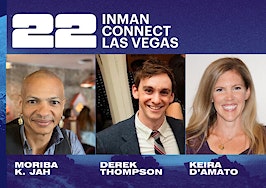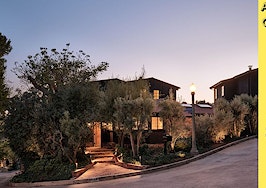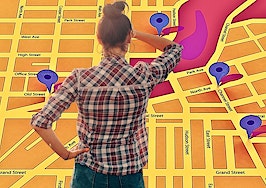The verdict is in — the old way of doing business is over. Join us at Inman Connect New York Jan. 23-25, when together we’ll conquer today’s market challenges and prepare for tomorrow’s opportunities. Defy the market and bet big on your future.
This story is part of a Reporter’s Notebook series for Inman Intel that accompanies our larger feature on utopian cities. Read the main feature here.
In the course of reporting on utopian solutions to today’s housing problems, one of the places that kept coming to mind was Salt Lake City, where I happen to live.
The city is notable in the U.S., and really the entire world, because it was founded as a kind of religious utopia but — unlike so many other wackadoo cities (I say this as a descendant of the city’s founders) — it’s still chugging along. In fact, U.S. News and World Report has ranked Utah’s economy as the very best in the country.
CAN FUTURISTIC UTOPIAS SOLVE OUR HOUSING CRISIS?
So what’s going on?
The city was first founded by religious refugees, members of the Church of Jesus Christ of Latter-day Saints (Mormons), who fled violence in the Midwest. They arrived in the Rocky Mountains in 1847 and the church’s leader at the time, Brigham Young, famously looked out over the Salt Lake Valley and pronounced, “This is the place.”
The Mormons soon laid out a new city according to the Plat of Zion, a Roman-esque city planning concept that called for massive square blocks. Blocks were common in other cities at the time, but the Mormons’ approach was different. Most obviously, Mormon cities included abnormally wide streets, which are said to have resulted from Young’s desire to have enough space to do a U-turn with a team of oxen.
Those wide streets are still a part of most Utah towns with Mormon origins, but other features have been lost. For instance, the blocks were huge in order to give space for the new settlers to have both homes and gardens. The Plat of Zion was explicitly meant to facilitate sustainability — incidentally a top priority among most of today’s utopians as well.
Salt Lake was also supposed to be the headquarters of a sprawling desert colony that spanned what is today multiple states. In his 1942 book Mormon Country, writer Wallace Stegner explains how at one point there was even a plan to settle on the lower parts of Colorado River, effectively giving the Mormons a seaport via the Gulf of Mexico (today the river no longer runs to the ocean because it’s so heavily diverted).
In any case, Salt Lake and other early Mormon towns were every bit as much a physical manifestation of values and ideology as places such as Brasilia (which as built in the 1960s and is both visually stunning and widely reviled for its extreme car orientation). In 2013, I interviewed a number of prominent architects about this, including the famous-in-the-architecture-world Andres Duany, who praised the Mormons’ city planning ideas.

Downtown Salt Lake City is visible in the foreground, while the Wasatch mountains rise up in the background. Credit: Brent Pace and Unsplash
But significantly, Salt Lake City is not still a semi-agrarian promised land with bounteous agriculture taking place in the heart of every urban block. Indeed, apart from the wide streets, the region looks a lot like most other western metropolises.
Salt Lake faces many challenges and is far from perfect, as is the case for most cities. But the fact that it still exists and is actually thriving is notable. And what this seems to illustrate is the idea of layering, as explained by Michael Rodriguez, director of research at non-profit Smart Growth America. Salt Lake today is the result of many generations leaving their imprints.
“A lot of the cities we love around the world, like these European cities that westerners like a lot, are layered with age,” Rodriguez explained. “Our favorite places don’t just happen in one fell swoop, they often happen incrementally over centuries and centuries. There’s one thing layered on top of another thing, one city layered on top of another.”
In other words, if Salt Lake had stuck to its founding principles as a kind of theocratic farm town, it surely wouldn’t be topping lists today for its great economy. It probably wouldn’t be the all-but-guaranteed host of the 2034 Olympics. Instead, Salt Lake acquired other layers. It diverged from its utopian roots and became a regular city. And therein lies a lesson there for anyone who thinks they can build a perfect new town out of scratch.













